STATEMENT
imMONUMENT is a horizontal landscape monument for Catalan traditional dance La Sardana. It’s a temp of methodology application base on J. J. Gibsons affordance theory.
It challenges architecture as an object set out boundaries to detach itself to the environment.
It also challenges monuments as a embodied symbol fail to celebrate insignificant human moments.
Mainly through three dimensions: Identification (from in situ to nationalism), Human bodies (from disabled body to super body), non-Object (from interior to landscape).
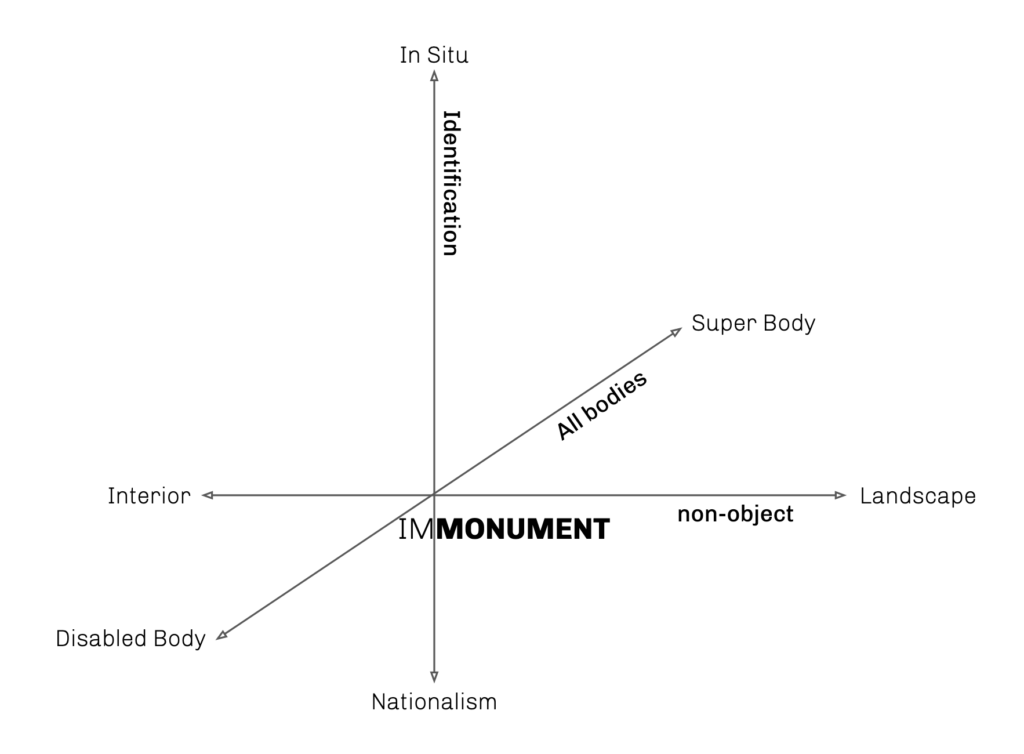
Three main dimensions about the project
The Site
La Sardana is a Catalan musical genre typical of Catalan culture and danced in circle following a set of steps. The dance was originally from the Empordà region (Girona Province), but started gaining popularity throughout Catalonia from the late 19th century to beginning of the 20th century.

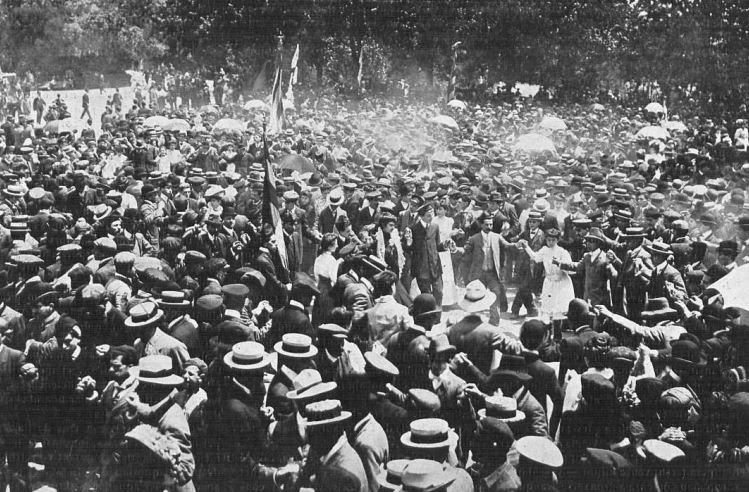
Among all the popular sites of La Sardana, “Plaça de la Sardana”, Parc de la Devesa in GIRONA as the origin of la Sardana become the site of the project.
It’s the green lung of the city, currently underutilized and the urge of transforming the site from both citizens and municipality.
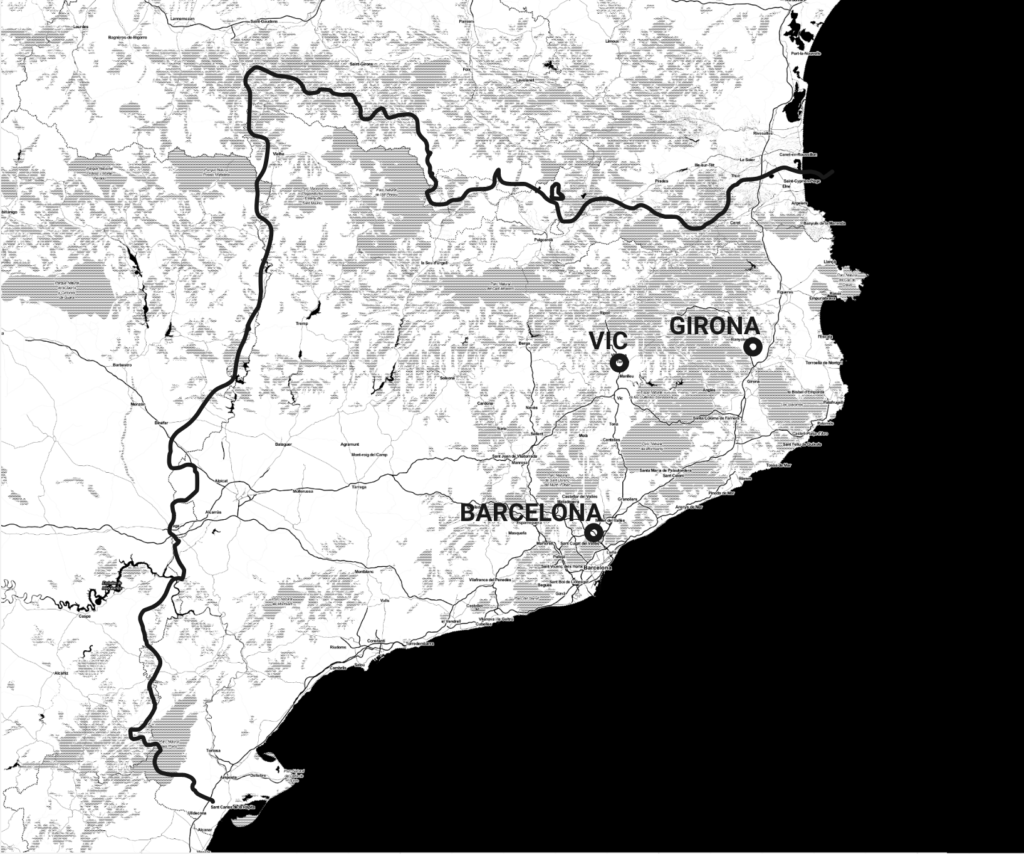
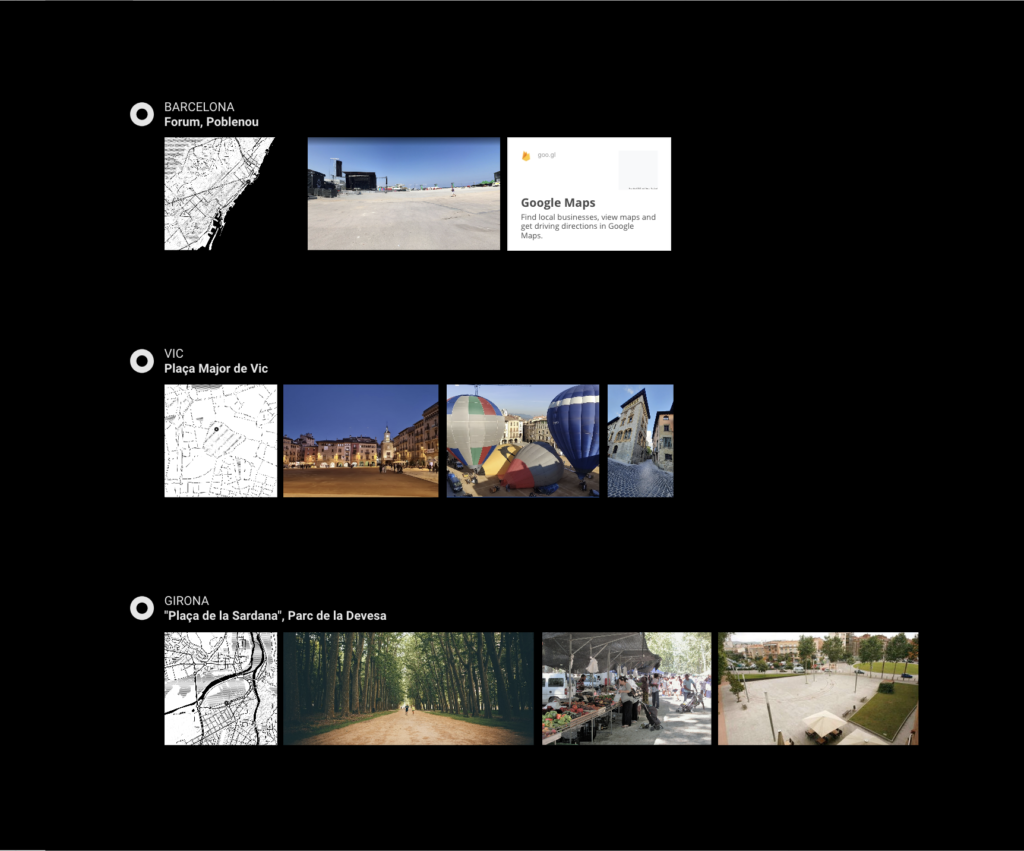

Identify problems
“Architecture programming”
Duerk, D (1993) Architectural programming: information management for design, John Wiley & Sons, New York
Citizens and municipality both realized the park currently under-utilized, but they focus on different issues.
Citizen: security, ecological sustainability, lack of infrastructure, transportation, urge to enhance the community interaction in this 40 hectares green center of the city.
Municipality: economy, management complexities, fears to novel affordances
design to provide solutions to the problemsStructural affordances through 3-dimensions

- All Bodies ? ANTHROPOMETRICS FOR THE DISABLED
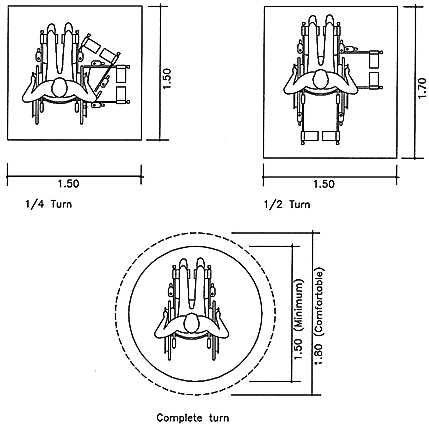

- Identification ? PATTERN OF LA SARDANA
The steps are meticulously counted as two- or three-step movements taken sideways within the circle. The direction of the steps is alternated. The hands stay on the hip or shoulder level depending on the step structure. The pattern of the choreography has jumping intervals changing with the music. Usually there is more than one circle with varying tempo and levels of dance knowledge.

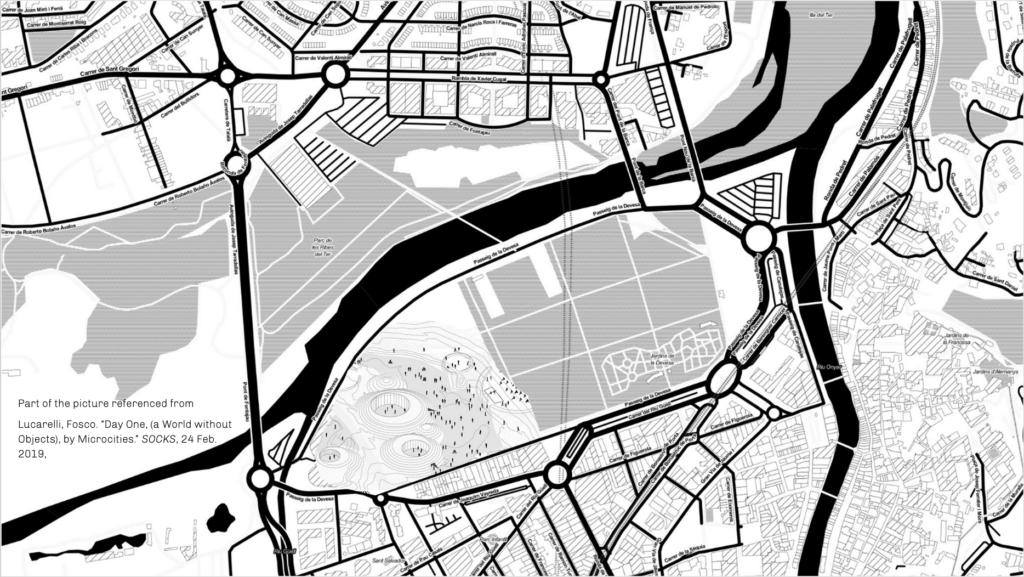
Scientific Interest
An academic philosophy of affordances can be materialized to vision an ecological contextual architecture by interpreting diagram of behaviors to initial polyvalent usage as a mechanism for future urban renew.
Affordance-based Theoretical Framework
“Architecture and design do not have a satisfactory theoretical basis.”
Gibson, James J. The Ecological Approach to Visual Perception. Psychology Press, 2015.
The affordances of the environment are what it offers the animal, what it provides or furnishes, either for good or ill. The verb to afford is found in the dictionary, but the noun affordance is not. I have made it up. I mean by it something that refers to both the environment and the animal in a way that no existing term does. It implies the complementarity of the animal and the environment (Gibson, 1979).
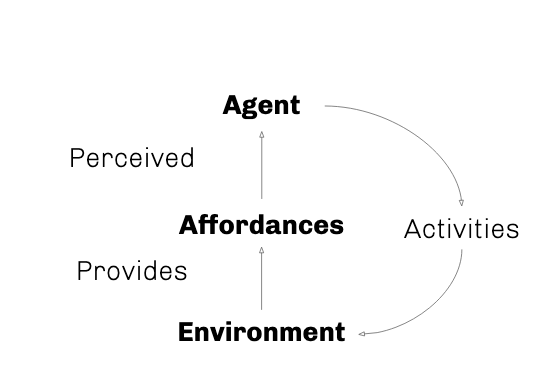
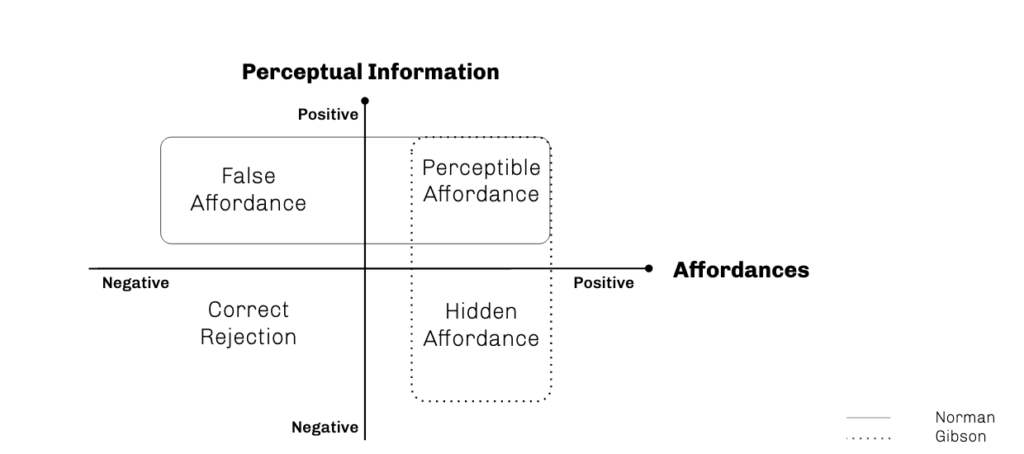
Affordance theory applied in other disciplines:

What’s the miss opportunities in these applications of Norman’s affordance theory to architecture design?

What’s the methodology and Impact measurement mechanism?
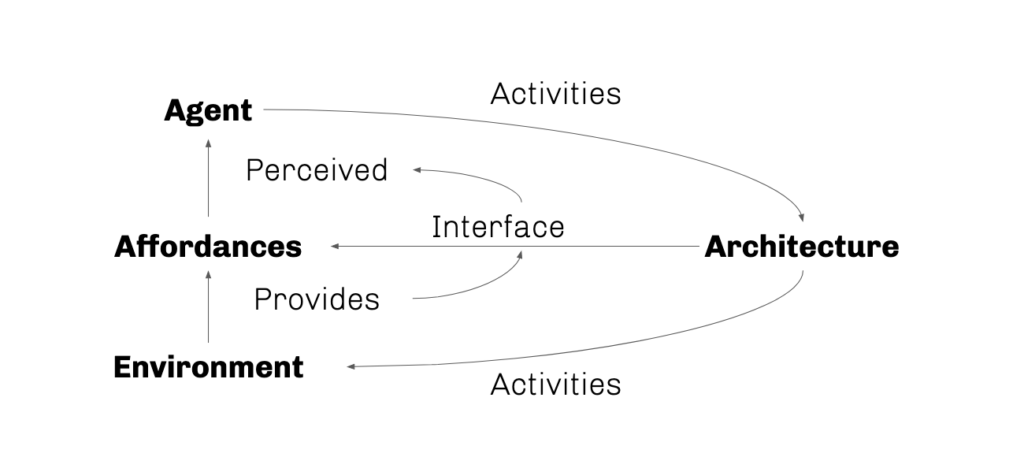

Potential measurements

Bibliography
Gibson, James J. The Ecological Approach to Visual Perception. Psychology Press, 2015.
D. El Amri and H. Akrout, Journal of Business Research 121 (2020) 127–141
Norman, Donald A. The Design of Everyday Things. The MIT Press, 2013.
“‘A Ladder of Citizen Participation.’” The City Reader, 2015, pp. 323–336., https://doi.org/10.4324/9781315748504-47.
Duerk, D (1993) Architectural programming: information management for design
John Wiley & Sons, New York
Accessibility Design Manual : 5-Appendices : 2-Anthropometrics 1/2.” United Nations, United Nations, https://www.un.org/esa/socdev/enable/designm/AD5-02.htm.
Maier, Jonathan R.A., et al. “An Affordance-Based Approach to Architectural Theory, Design, and Practice.” Design Studies, vol. 30, no. 4, 2009, pp. 393–414., https://doi.org/10.1016/j.destud.2009.01.002.
Galvao, A B and Sato, K (2006) Incorporating affordances into product architecture: methodology and case study, in ASME Conference on Design Theory and Methodology, Philadelphia, PA, Paper No. DETC2006-99404
Rietveld, Erik and Ronald, et al. “Affordances and Architecture – Architecture – e-Flux.” e, https://www.e-flux.com/architecture/superhumanity/179234/affordances-and-architecture/.
Lucarelli, Fosco. “Day One, (a World without Objects), by Microcities.” SOCKS, 24 Feb. 2019, https://socks-studio.com/2012/03/02/day-one-a-world-without-objects-by-microcities/.

